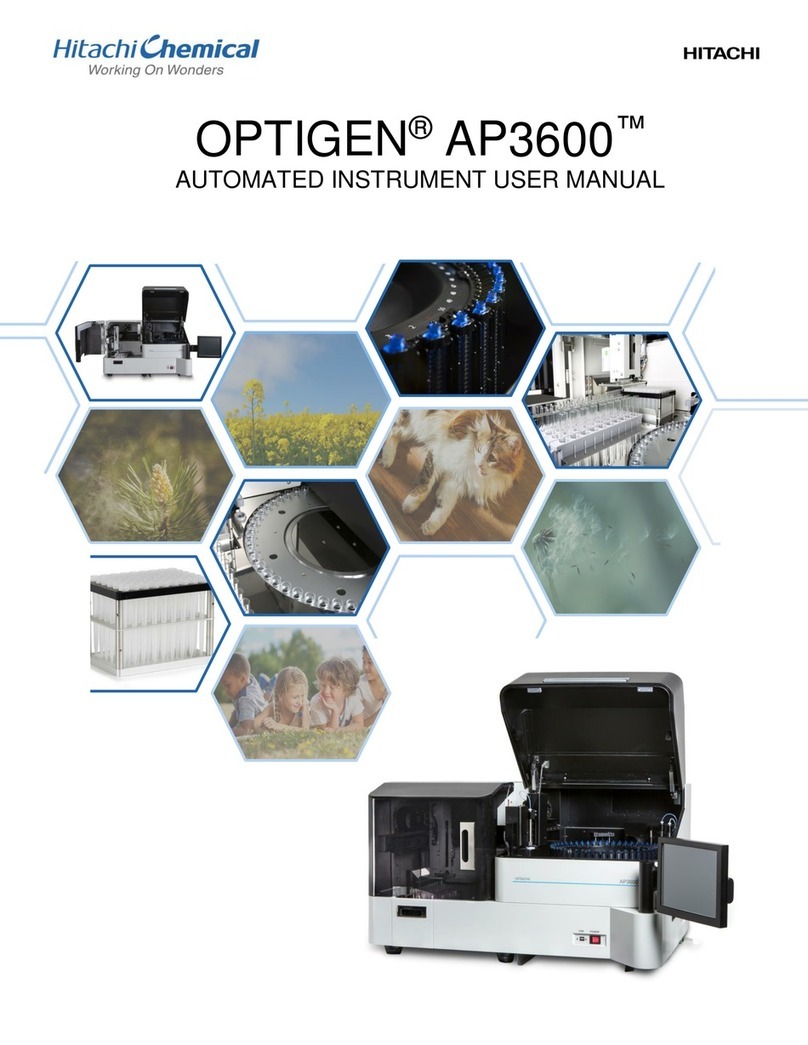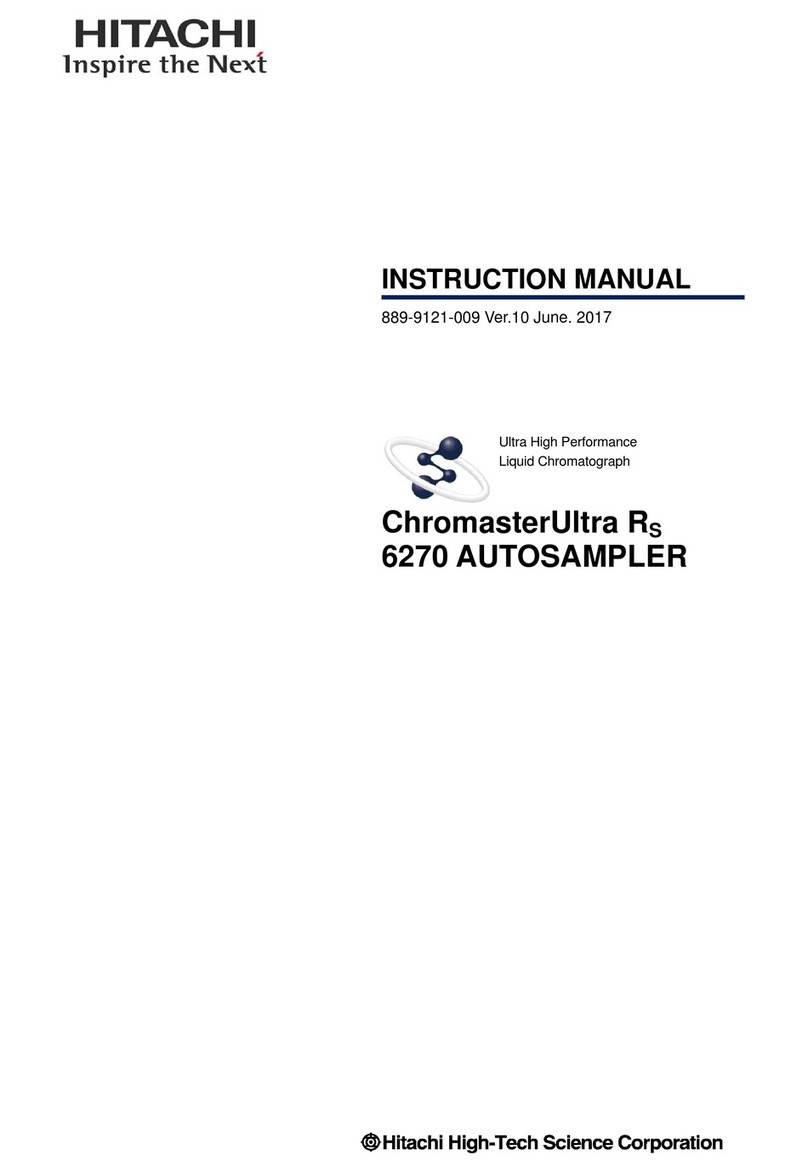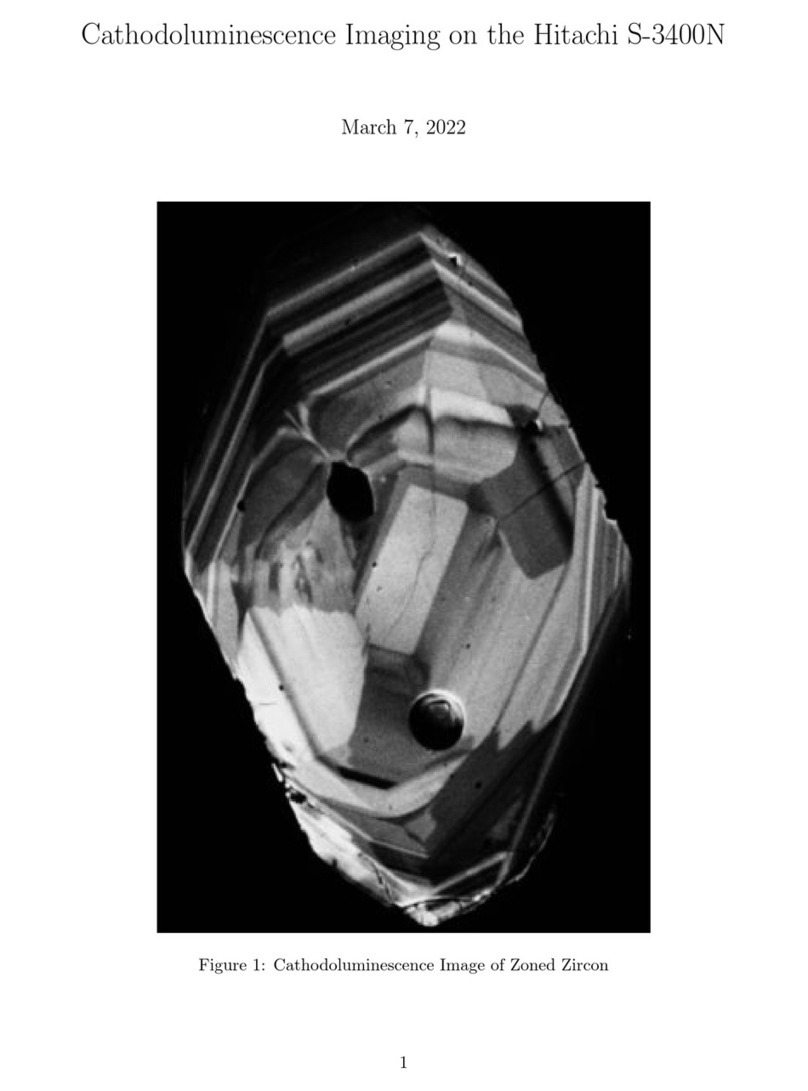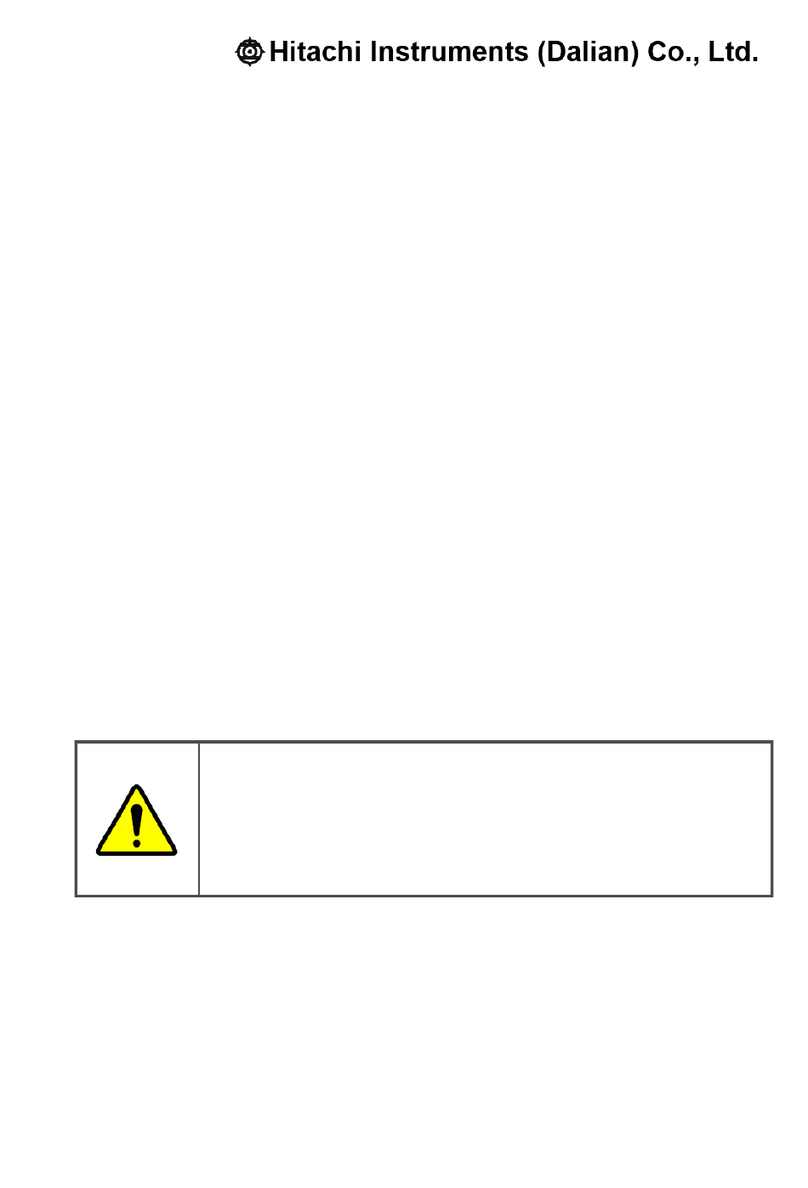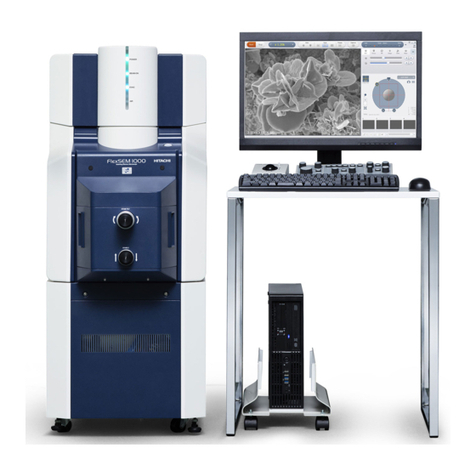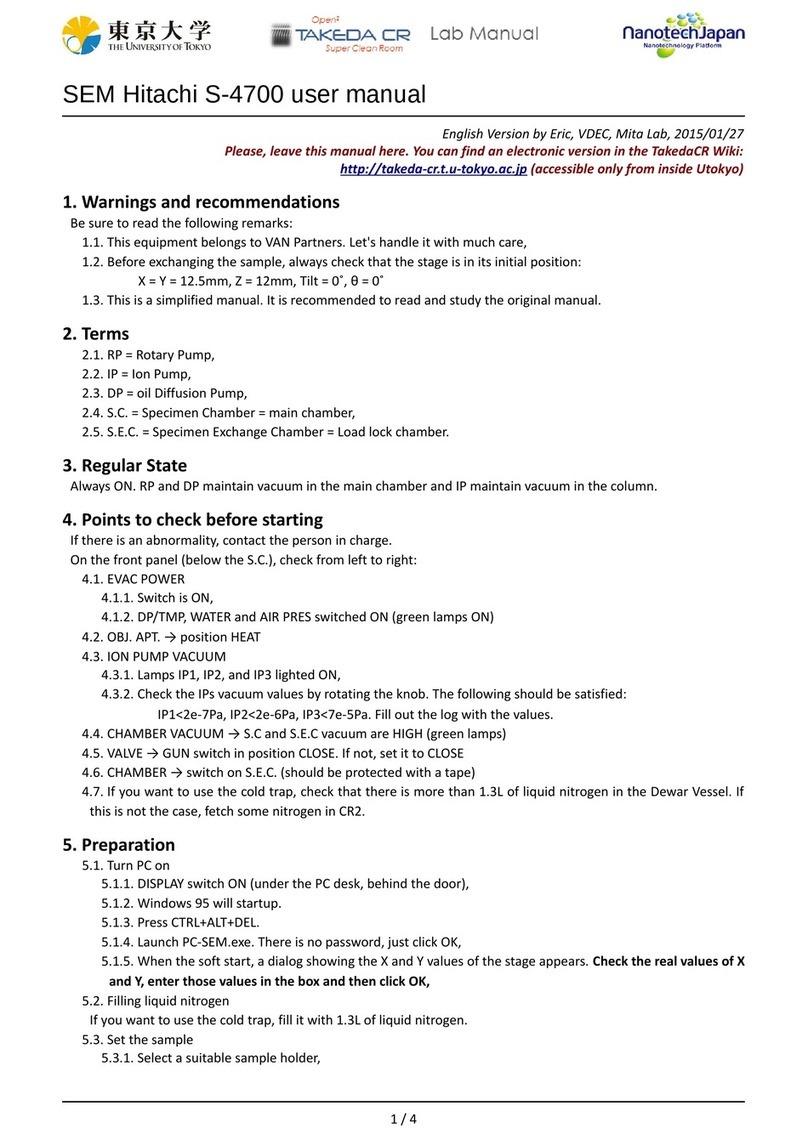
( 5 ) Q1E-EP1451
CONTENTS
Page
1. Introduction ................................................. 1
1.1 Features ......................................................... 1
1.2 Principles of operation .......................................... 1
1.3 Intended Use ..................................................... 2
1.4 Components ....................................................... 2
1.5 Accessories (Option) ............................................. 3
1.6 Construction ..................................................... 4
2. Inspection before Use ........................................ 5
2.1 Inspection for Appropriate Connection ............................ 5
2.2 Inspection for Material Surface .................................. 5
3. Operation Procedure .......................................... 6
3.1 Connection and Settings .......................................... 6
3.2 Use of Puncture Guide Fixture (EZU-PA3U) ........................ 10
3.3 How to adjust Puncture Guide Fixture (EZU-PA3U) ................. 11
4. Option of C41L47RP Probe .................................... 13
4.1 Magnetic sensor ................................................. 13
5. Cleaning, Disinfection and Sterilization .................... 15
5.1 Point of use (Pre-cleaning) ..................................... 18
5.2 Containment and transportation .................................. 18
5.3 Manual Cleaning and disinfection ................................ 19
5.4 Drying .......................................................... 22
5.5 Inspection ...................................................... 23
5.6 Packaging ....................................................... 23
5.7 Sterilization ................................................... 24
5.8 Storage ......................................................... 26
6. Cleaning, Disinfection and Sterilization of EZU-PA3U ........ 27
6.1 Point of use (Pre-cleaning) ..................................... 28
6.2 Containment and transportation .................................. 28
6.3 Manual Cleaning and disinfection ................................ 28
6.4 Automated cleaning and disinfection ............................. 30
6.5 Drying .......................................................... 31
6.6 Inspection ...................................................... 31
6.7 Packaging ....................................................... 31
6.8 Sterilization ................................................... 32
6.9 Storage ......................................................... 32
7. Maintenance and Safety Inspection ........................... 33
